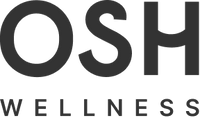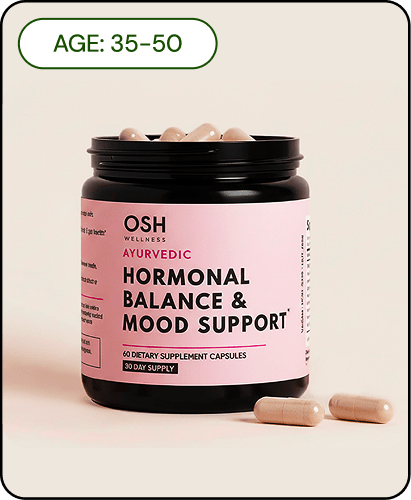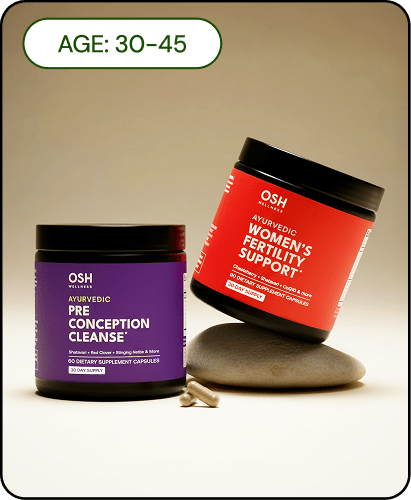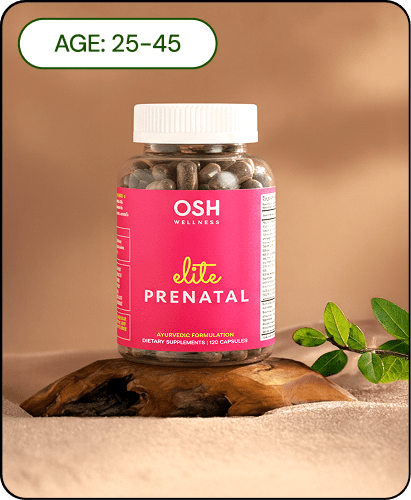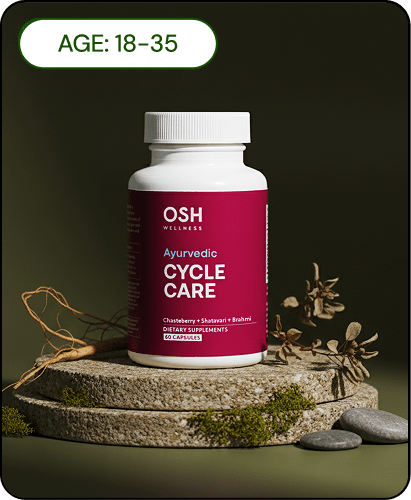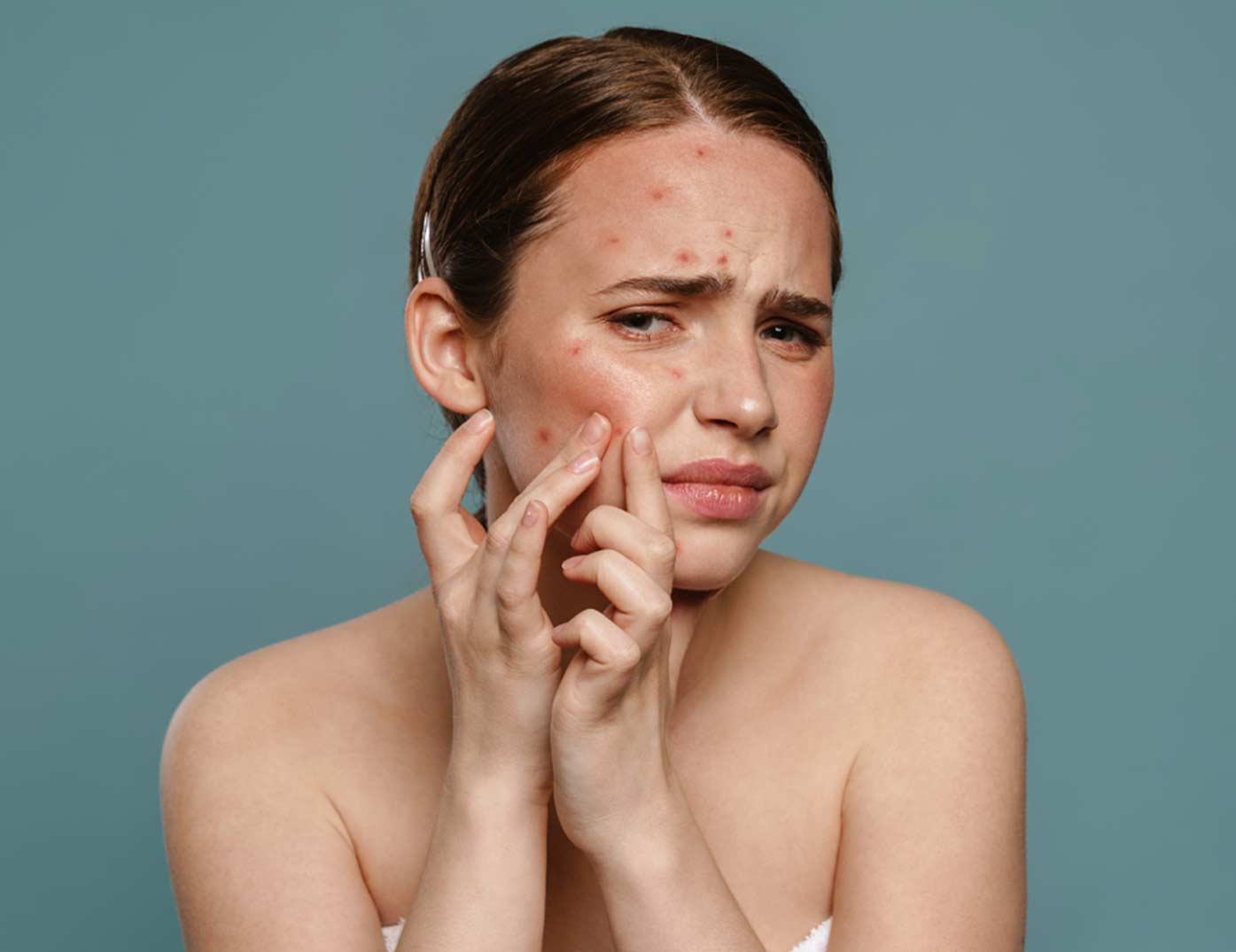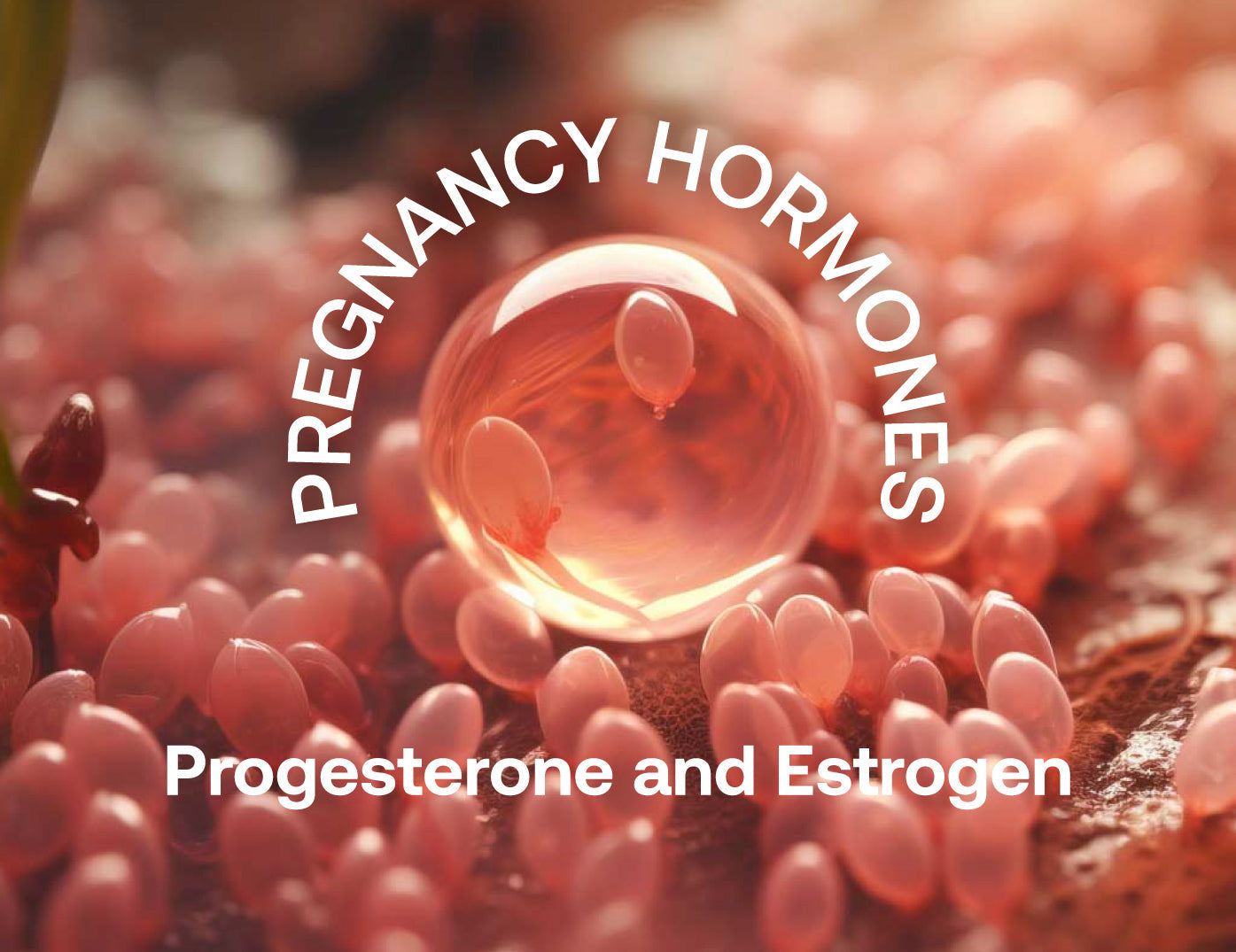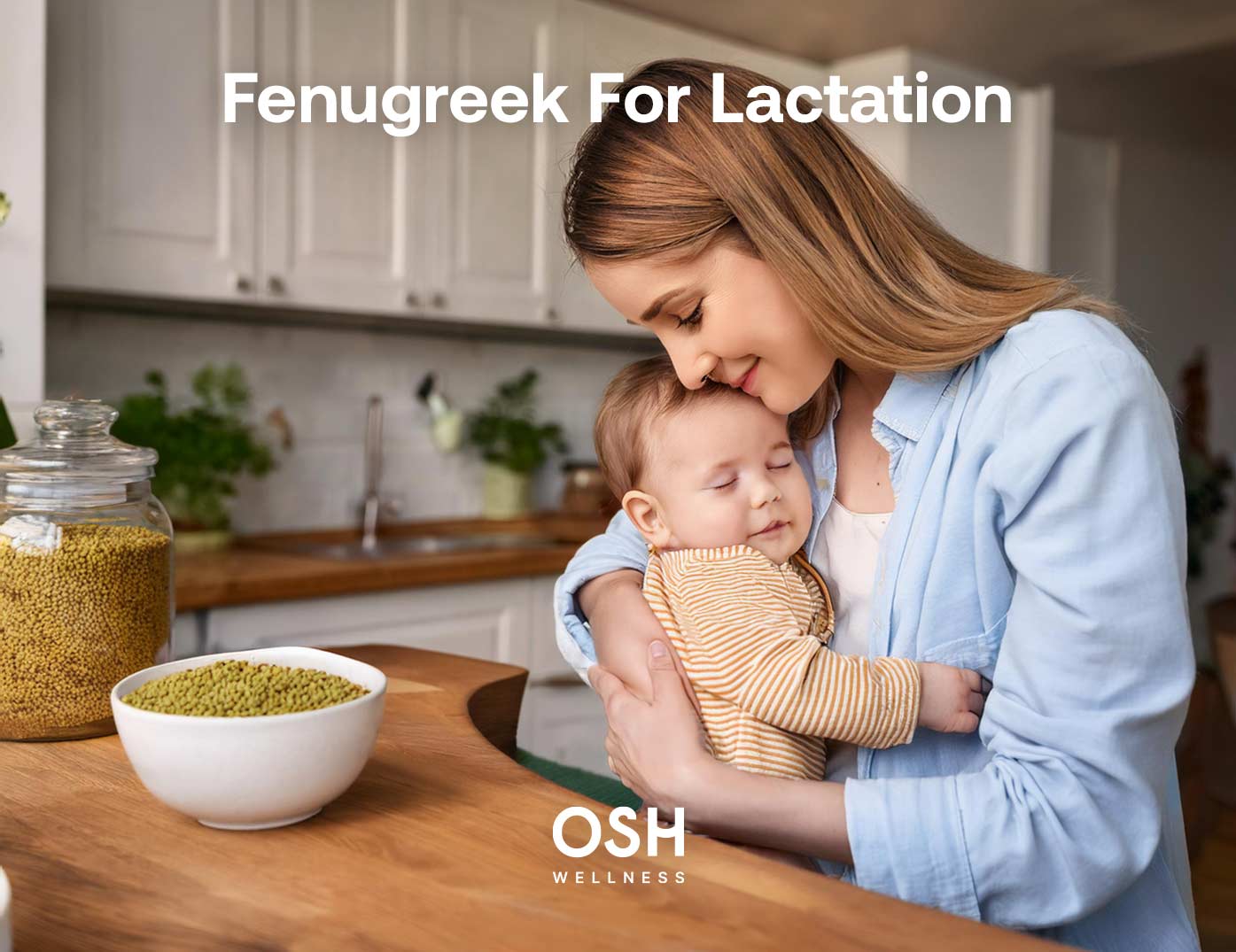Table of content
Hormonal acne is a common issue. It can be especially common in women due to fluctuating hormone levels. Whether it’s acne during ovulation or breakouts during periods, hormonal changes throughout the month can contribute to flare-ups.
While acne is often associated with adolescence, it can unfortunately persist well into adulthood. Understanding the underlying hormonal causes of acne and how to treat it can help manage and reduce breakouts, allowing you to regain control over your skin health. This comprehensive guide will delve into the connection between hormonal fluctuations and acne and explore ways to treat and prevent it.
The Connection Between Hormones and Acne: An In-Depth Look at the 28-Day Cycle

Our skin is incredibly sensitive to changes in hormone levels, and acne during ovulation or during periods is a prime example of how these fluctuations can impact our complexion. To understand hormonal acne better, we need to look closely at the menstrual cycle phases and how hormonal shifts during each phase can contribute to breakouts. Remember that these numbers are based on an average cycle, and your cycle may be shorter or longer.
Phase 1: Menstrual Phase (Days 1-5)
The menstrual phase is the first phase of the cycle, beginning when your period starts. During this phase, both estrogen and progesterone levels are low. While hormonal acne isn’t typically the most pronounced during menstruation, some individuals may still experience breakouts due to the drop in estrogen, which can lead to an imbalance of other hormones that might contribute to acne.
Phase 2: Follicular Phase (Days 6-14)
The follicular phase begins immediately after menstruation ends. During this phase, estrogen levels steadily rise as the body prepares for ovulation. Estrogen helps to promote clear skin by balancing oil production, and many people experience clearer skin during this phase. However, hormonal acne may still occur in some individuals if estrogen dominance is imbalanced by other factors like stress or diet.
Phase 3: Ovulation (Day 14)
Ovulation is the phase when the egg is released from the ovary and prepared for fertilization. It’s also a phase when there’s a significant surge in testosterone. Testosterone can lead to acne, especially around the chin, jawline, and cheeks. The hormone is responsible for increased oil production, and when it spikes, it often causes clogged pores, leading to breakouts. Acne during ovulation can be more persistent and harder to control.
Phase 4: Luteal Phase (Days 15-28)
The luteal phase follows ovulation and is marked by increased progesterone levels. Progesterone’s role is to prepare the body for a potential pregnancy. Still, it also increases sebum production, which can clog pores and contribute to acne. Period acne often flares up during the luteal phase, with many people noticing more pronounced breakouts right before menstruation begins. Acne is often considered a PMS symptom.
The combination of estrogen, testosterone, and progesterone dominance throughout the cycle creates the perfect storm for hormonal acne, with breakouts occurring most often around ovulation and right before menstruation.
What Causes Hormonal Imbalance and Associated Acne?

Hormonal imbalances are the root cause of hormonal acne, and several factors can contribute to these imbalances. Some of the most common causes include:
Pregnancy: Pregnancy causes a significant rise in hormones like progesterone and estrogen, which can lead to acne breakouts.
Polycystic Ovary Syndrome (PCOS): Women with PCOS often have elevated levels of androgens (male hormones), which can result in excess oil production and clogged pores, leading to acne.
Stress: Stress triggers the release of cortisol, a hormone that can increase the production of sebum, leading to clogged pores and acne.
Birth Control Pills: While some birth control pills can help reduce acne, others may cause hormonal changes that can contribute to breakouts.
Diet and Lifestyle Factors: Poor diet, lack of sleep, and unhealthy lifestyle habits can disrupt hormone balance and contribute to acne.
Puberty: Of course, hormonal fluctuations during puberty often lead to acne as the body goes through rapid changes.
Addressing these underlying causes is crucial to reducing the frequency and severity of hormonal acne.
Diet for Helping with Hormonal Acne: Foods to Add and Avoid

A balanced diet can play a significant role in managing hormonal acne. Certain foods can help regulate hormones, while others can exacerbate acne.
Foods to Add
Omega-3 Fatty Acids: Found in foods like salmon, chia seeds, and walnuts, omega-3s help reduce inflammation, which can calm acne flare-ups.
Fiber-Rich Foods: Eating more fiber, such as fruits, vegetables, and whole grains, helps balance blood sugar levels, reducing insulin spikes that can trigger acne.
Probiotic-Rich Foods: Probiotics found in yogurt, kefir, and fermented foods can improve gut health, which in turn can help balance hormones and reduce acne.
Zinc-Rich Foods: Zinc, found in foods like pumpkin seeds, spinach, and beans, helps reduce inflammation and oil production, both of which are associated with acne.
Foods to Avoid
Sugary and Processed Foods: High-glycemic foods, such as sugary snacks and white bread, can spike insulin levels, leading to increased sebum production and acne.
Dairy Products: Some studies suggest a link between dairy consumption and acne, possibly due to hormones in milk that can trigger skin breakouts.
Refined Carbs: Foods like pasta and white rice can cause insulin spikes, which may worsen hormonal acne.
A diet rich in whole, nutrient-dense foods and low in processed, sugary items is essential for managing acne.
Natural Remedies, Herbs & Supplements for Hormonal Acne

Osh Wellness has incorporated powerful, natural, hormone-balancing ingredients into its supplements. The following are particularly beneficial for those with hormonal acne:
Cycle Care (for women 18-35): Designed to support hormonal balance throughout the menstrual cycle, Cycle Care can help regulate hormones and reduce acne. It includes things like vitex (chaste tree berry), Shatavari, Brahmi, and Rhodiola, which have been shown to support progesterone levels, soothe the reproductive system, and reduce PMS symptoms.
Hormone & Mood Support (For women 35+ or postpartum): Designed for the post-childbearing stage, herbs like ashwagandha, maca root, and holy basil are known for their adaptogenic properties. They help the body manage stress and support balanced hormone levels for better skin, mood, and well-being.
For those looking for natural ingredients to add to their skincare routine, here are a few that can help support hormone balance and reduce acne:
Tea Tree Oil: Known for its antibacterial properties, tea tree oil can be applied topically to acne-prone areas to help fight acne-causing bacteria.
Aloe Vera: Renowned for its soothing and anti-inflammatory properties, aloe vera can reduce redness and swelling while promoting skin healing, making it an effective remedy for acne-prone skin.
Witch Hazel: A natural astringent, witch hazel helps tighten pores, control oil production, and reduce inflammation, aiding in the treatment of acne.
Natural remedies can be a gentle and effective way to support hormonal balance and alleviate acne symptoms.
Medical Treatments for Hormonal Acne

In many cases, diet and lifestyle changes can help manage hormonal acne. However, medical treatments may be necessary for more severe cases. It’s important to consider whether or not these treatments are right for you. In some cases, treatments like birth control may mask hormonal imbalance and work as a band-aid rather than a solution. If your doctor and you decide medical treatments are right for you, some options can include:
Topical Treatments: Retinoids and benzoyl peroxide can help clear up acne by reducing inflammation and unclogging pores.
Oral Medications: Birth control pills can regulate hormones and help reduce acne. Anti-androgen drugs like spironolactone are often prescribed to block the effects of testosterone, which can help reduce acne in women.
Hormonal Therapy: In some cases, hormone replacement therapy (HRT) or other hormonal treatments may be recommended to balance hormone levels.
It’s always advisable to consult a healthcare professional before starting any medical treatments for hormonal acne.
Conclusion
Hormonal acne can be frustrating, but you can better manage your skin health by understanding the relationship between hormones and acne and adopting a combination of dietary changes, natural remedies, and medical treatments if necessary.
Remember to consult with a healthcare provider or dermatologist before beginning any new medical or natural treatments to ensure the best approach for your unique skin.
FAQs
What is hormonal acne?
Hormonal acne is caused by hormone fluctuations, typically during the menstrual cycle, pregnancy, or conditions like PCOS. It commonly appears around the chin, jawline, and cheeks.
Can diet help with hormonal acne?
Yes, a balanced diet rich in omega-3 fatty acids, fiber, and probiotics can help regulate hormones and reduce acne. Avoiding sugary and processed foods may also help reduce breakouts.
What is the best treatment for hormonal acne?
Natural remedies like herbs for hormone support and anti-inflammatory foods can be effective. Lifestyle changes like reducing stress and dietary changes may also help. If needed, medical treatments like birth control pills, topical retinoids, and anti-androgen drugs can help treat hormonal acne.
How can I reduce breakouts during ovulation?
To reduce acne during ovulation, consider using natural remedies like supplements, maintaining a healthy diet, and supporting the skin with natural ingredients. Topical treatments with salicylic acid or benzoyl peroxide can also help.
